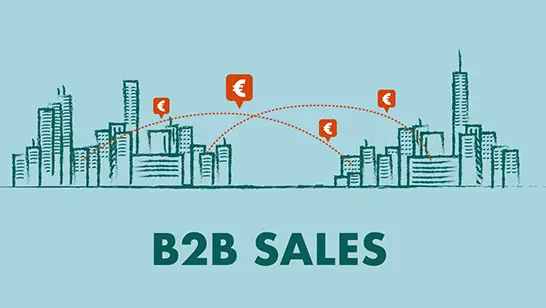
If your B2B sales force isn’t taking advantage of the latest and greatest developments in sales technology, it’s only a matter of time before you lag behind your competitors. Like it or not, advanced technology is changing the world of B2B sales, and only the most adaptable teams are going to survive.
How has technology forced B2B sales teams to evolve? And which B2B sales trends are most worth following as we adapt to this new technological progress?
Table of Contents
The Omnichannel Omniverse
One of the most prominent changes to the landscape of sales and marketing is the emergence and rise to prevalence of dozens, if not hundreds of different communication channels. Decades ago, your options for communicating with audiences were fairly limited; physical mail, phone calls, and advertisements and media like TV and radio were your best options. These days, there’s more than a dozen viable social media channels – and not everyone uses them.
The traditional B2B sales approach has been to devise an omnichannel strategy, taking advantage of as many mediums and channels as possible to reach a broader audience and create a more cohesive, universal presence. This is still highly effective, but the atomization of society and the continued increase in the number of channels is making it harder. Modern B2B sales teams need to have a deliberately focused, strategic approach if they want to take advantage of their best channels and avoid wasting effort on their worst ones.
Data and the Individual
Data grows exponentially, and has for decades at this point. With the right tools, you can quickly figure out tons of data about your target audience, and even customize messages with highly personalized, individualized variables. This phenomenon has an interesting relationship with a rise in demand for such individualization; it both addresses the demand and generates it.
These days, people respond much better to advertising and sales efforts that are extremely relevant to them, down to the individual. The best B2B sales teams take advantage of this by gathering as much data as possible and individualizing their efforts to the extent they can.
Automation, Consistency, and Scalability
Better technology has equipped B2B sales teams with much more automation, leading to greater consistency and scalability. Through the power of automation, B2B sales teams can reach more people, eliminate the risk of human error, and deploy strategies at both small and large scales with the same principles applied. This has had a pronounced effect on reducing costs while increasing effectiveness, for businesses of all sizes and strategies of all types.
As we enter the AI revolution, expect to see automation reaching into even deeper corners of the B2B sales world.
Self-Service and New Roles
Technology has given people a greater sense of independence and autonomy, enabling them to do their own research and answer their own questions. As a result, many people prefer self-service to working with other people, and especially salespeople.
Savvy B2B teams have leaned into this rather than fighting it. They’ve utilized their own tools and technologies to create premium pieces of content and knowledge bases that prospects and customers can use to educate themselves. Now, B2B salespeople often function as trusted advisors, rather than sellers, gently guiding people to the information they need and helping them come to their own conclusions, rather than forcefully overcoming objections or attempting to persuade reluctant contacts.
Culture Clashes
One emergent effect of this has been a kind of culture clash between people with older B2B sales philosophies and those who lean into new technologies. There are important things to learn from both broad philosophies, but teams that can’t reconcile these strategic approaches are floundering compared to their peers.
Deep Analytics
Thanks to deep analytics technology, it’s easier than ever to gauge your B2B sales performance and identify the variables that are holding you back from achieving your goals. You can pinpoint channels that aren’t working, identify drip email campaigns that are carrying the team, and even effectively predict whether your random new idea is going to work or not.
The Age of Attrition
Attrition in sales is higher than ever, and it’s always been high for this department. There are many possible explanations from this, including higher pressure to perform, greater competition, and an ongoing need to adapt to new tools and technologies. In any case, B2B sales teams face increased pressure; it’s important to prioritize employee retention, but you also need employees who are resilient and adaptable.
Better tools and better technologies have, in some ways, made B2B sales easier and more approachable. In other ways, they’ve made B2B sales much more complicated and confusing. However you feel about it, it’s important to do what you can to take advantage of the latest technologies and continue adapting to remain competitive.

